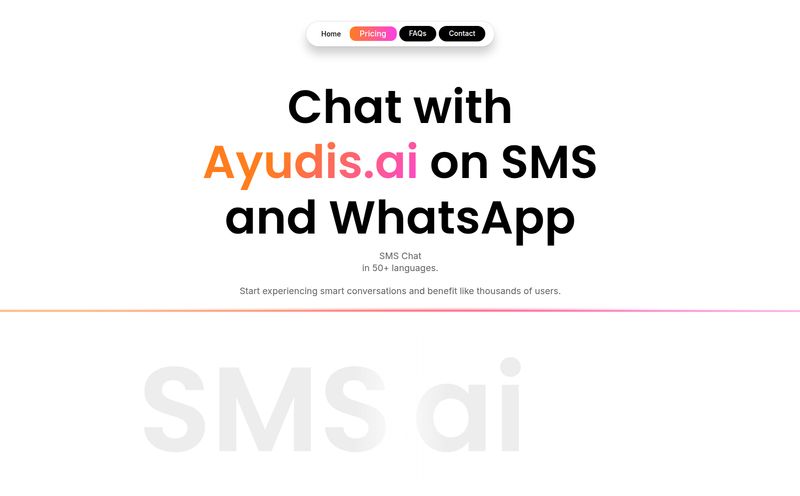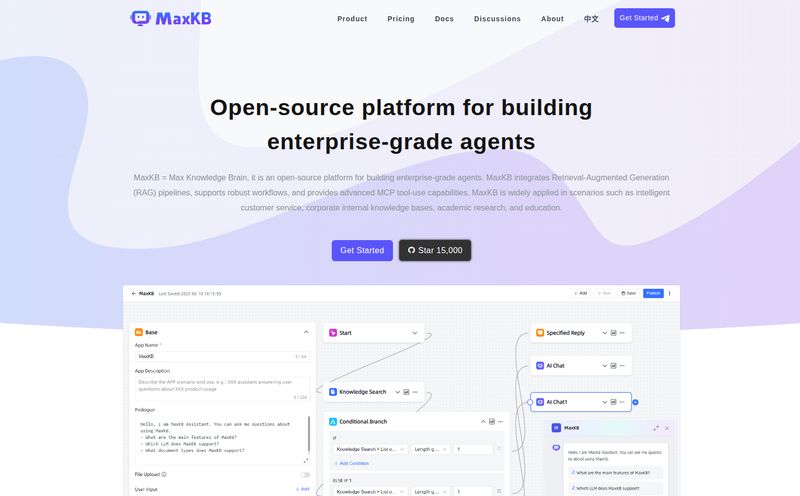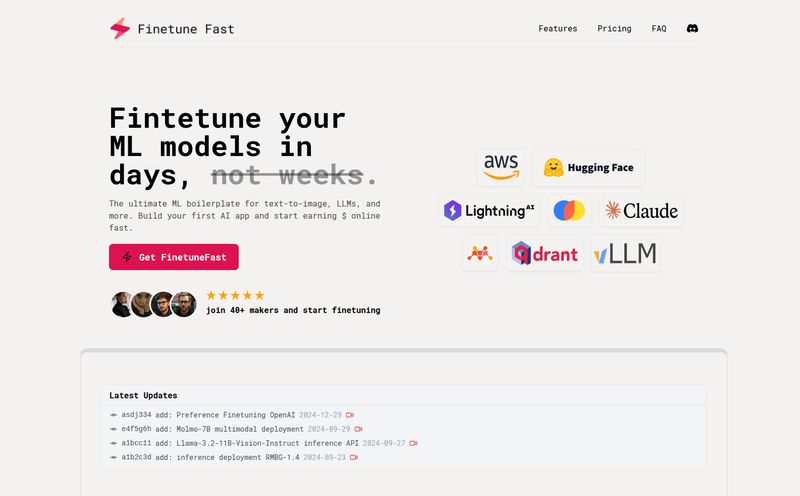We’ve all been there. Staring into the abyss of a massive MongoDB collection, trying to piece together how one document relates to another. You’re toggling between your code, the database GUI, and a half-finished aggregation query that looks more like ancient hieroglyphics than something a human wrote. It’s powerful, yes, but sometimes… it’s a headache.
For years, we’ve just accepted this as the cost of doing business with NoSQL. The flexibility is amazing, but the cognitive load can be a real drag on productivity. I’ve seen junior devs get completely lost, and even seasoned pros spend hours hunting down a single performance bottleneck.
So when I heard about a tool called ScoutDB, my ears perked up. The tagline? “The world’s first agentic Mongo GUI.” Agentic? That’s a bold claim. It sounds like something straight out of sci-fi, but in the current AI gold rush, it’s not that surprising. But does it actually work? Or is it just another fancy wrapper on a language model? I had to find out.
So, What Is ScoutDB, Really?
Okay, let's break down that term. An "agentic" tool isn’t just a passive window into your data. It’s an active participant. Think of it less like a map and more like a GPS navigator who’s also a local guide. It doesn't just show you the streets; it suggests routes, points out landmarks, and warns you about traffic jams ahead.
In the context of MongoDB, ScoutDB aims to be that guide. It connects to your database and, instead of just presenting you with a tree of collections and a query box, it creates a dynamic, visual workspace. It’s built on the idea that you should be able to interact with your data as naturally as you’d talk to a colleague. A pretty lofty goal if you ask me.

Visit ScoutDB
The Killer Features That Got My Attention
A tool can have all the buzzwords in the world, but it lives or dies by its features. Here’s what stood out to me during my initial exploration.
Talking to Your Data with Natural Language
This is the headline act. The idea of ditching complex query syntax for plain English is the dream, right? With ScoutDB, you can literally type things like, “show me all users who signed up last week and have more than 10 orders.” The tool uses an LLM to translate that into an actual MongoDB query and fetch the results.
I was skeptical. We’ve seen NLP demos that fall apart with anything but the most basic requests. But in my tests, it was surprisingly robust. It’s not perfect, and for super complex, multi-stage pipelines you’ll probably still want to get your hands dirty. But for 90% of the day-to-day data fetching and exploration? It’s a massive time-saver. It lowers the barrier to entry for everyone on the team, not just the database gurus.
The Infinite Canvas: Your Data's Playground
This was the feature that really made me go, “Oh, I get it now.” Traditional GUIs are lists and tables. So. Many. Tables. ScoutDB throws that out the window in favor of an infinite canvas. When you run a query, the results appear as nodes on this canvas. And here’s the cool part: you can click on a document, and it will automatically show you related documents from other collections.
It’s like a detective’s corkboard for your data. You can visually trace a user’s journey from a `users` document to their `orders` to the `products` within those orders. No more writing three separate queries and trying to connect the dots in your head. It’s all laid out in front of you. This visual mapping is powered by its ability to automatically discover relationships in your schema, which is a lifesaver in databases that dont enforce them.
Beyond Navigation: The Cost-Saving Superpower
Okay, faster navigation is great. A cool UI is nice. But what about the bottom line? This is where ScoutDB gets really interesting, especially for team leads and budget holders. One of its standout capabilities is its ability to connect directly to your GitHub repository.
Why? It proactively scans your codebase to find all the MongoDB queries your application is actually running in the wild. It then analyzes these queries for inefficiencies. We’re talking about missing indexes, slow operators, full collection scans—the stuff that secretly drives your database bill through the roof.
ScoutDB presents a dashboard of these problematic queries, ranked by what it determines to be their business impact. And it doesn't just flag them; it often suggests an optimized version of the query or the exact index you need to create. You can then review these suggestions and merge them. This turns performance optimization from a reactive, fire-fighting exercise into a proactive, continuous process. Seeing a tool connect the code to teh actual performance impact is something I haven't seen done this smoothly before.
The Real-World Experience: My Take
So, after playing around with it, what's the verdict? It's a mix of genuine excitement and a little bit of healthy caution.
The Good Stuff
The speed of navigating interconnected data is undeniable. What used to take me 15 minutes of joining and filtering in my head now takes about 30 seconds of clicking around on the canvas. It's a huge reduction in mental friction. The fact that it's backed by Y Combinator, Neo, and even endorsed by developers at MongoDB gives it a ton of credibility. They're not just some fly-by-night operation; there's serious backing here.
Potential Hurdles to Consider
No tool is a silver bullet. The initial setup requires granting access to your database and potentially your codebase, which will rightly raise some eyebrows in security-conscious organizations. You have to trust the platform. Furthermore, its reliance on LLMs for query translation is a double-edged sword. While powerful, it's a black box. What happens if it misinterprets your natural language and returns the wrong data? You still need a human in the loop to verify critical queries. Lastly, I wonder how well the canvas and auto-mapping would hold up with an obscenely complex schema with hundreds of collections and esoteric relationships. I suspect it might get a bit messy, but for most standard application databases, it should be fine.
What About the Price Tag?
As of this writing, there isn't a public pricing page that I could find on the Scout AI website. This is pretty common for new, B2B developer tools coming out of stealth. I'd imagine they are working with early customers directly and will likely roll out a tiered pricing model in the future—perhaps a free tier for individuals and paid plans for teams based on size or usage. My advice? If this sounds interesting, reach out to them for a demo.
Final Thoughts: Is ScoutDB Worth Your Time?
I think so. ScoutDB feels like a glimpse into the future of developer tools. It's a step away from rigid, text-based interfaces and towards more intuitive, AI-assisted workflows. It's designed for modern development teams who are moving fast and can't afford to get bogged down in database minutiae.
Is it going to replace the MongoDB Shell or Compass for every single task? Probably not. Power users will always want their low-level access. But for the vast majority of data exploration, debugging, and performance tuning? ScoutDB presents a compelling, and frankly, more enjoyable way of working. It's a tool that understands that a developer's most valuable resource is their time and mental energy.
Frequently Asked Questions
- What makes ScoutDB "agentic"?
- It's considered "agentic" because it does more than just display data. It actively assists you by translating natural language into queries, automatically mapping data relationships, and proactively scanning your code to suggest performance optimizations.
- Do I need to be a MongoDB expert to use ScoutDB?
- No, and that's one of its main appeals. The natural language querying and visual canvas make it much more accessible for developers, PMs, or data analysts who aren't experts in writing complex MongoDB aggregation pipelines.
- How does ScoutDB find and optimize queries?
- It connects to your GitHub repository to statically analyze your application's code. It identifies database queries, analyzes them for common performance issues (like missing indexes), and then suggests optimized queries or new indexes to improve performance and reduce cost.
- What LLMs does ScoutDB use?
- The FAQ on their site mentions they use a variety of models, including those from OpenAI and Anthropic, and they choose the best one for the specific task at hand, whether it's query generation or analysis.
- Is ScoutDB secure?
- Connecting any third-party tool to your database and codebase requires trust. ScoutDB is backed by reputable investors and likely follows industry best practices for security. However, teams should always perform their own security due diligence before integrating a new tool into their workflow.
- Can I use ScoutDB with databases other than MongoDB?
- Currently, all of ScoutDB's marketing and features are focused exclusively on MongoDB. There is no information to suggest it supports other databases like PostgreSQL or MySQL at this time.
Reference and Sources
- Scout AI Official Website: https://www.scout.ai/



